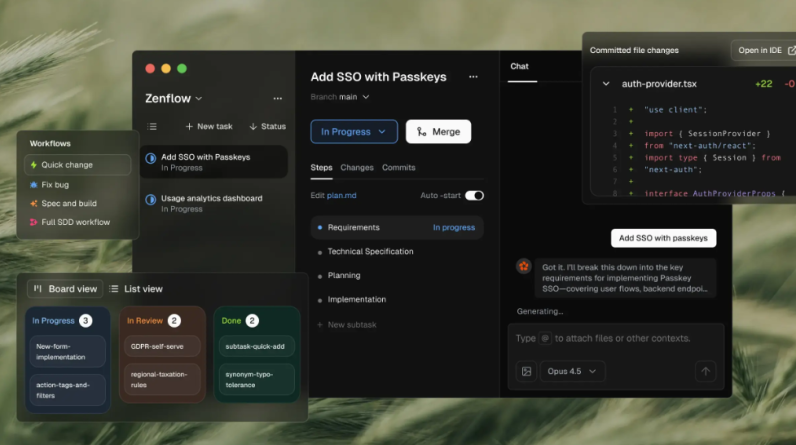Company Logo
The key market opportunities include investing in next-gen automation and AI-driven control for uniform production, adopting predictive maintenance to reduce downtime, enhancing membrane compatibility with innovative materials, diversifying supply chains to mitigate tariff risks, and maximizing operational efficiency through energy-saving technologies and modular production systems.
Dublin, Oct. 15, 2025 (GLOBE NEWSWIRE) — The “Wet Diaphragm Production Equipment for Lithium Batteries Market – Global Forecast to 2030” has been added to ResearchAndMarkets.com’s offering.
The demand for lithium-ion batteries is soaring, driven by electric vehicles, grid storage, and portable electronics markets. This has heightened the need for high-precision wet diaphragm production equipment, leveraging advanced technologies and smart solutions to meet industry demands for uniform sheet production and efficient electrolyte movement. Within this context, manufacturers are compelled to innovate, adhering to rigorous safety standards and sustainability goals. This report delves into the key trends, regulatory impacts, and market segmentation nuances, offering strategic insights crucial for decision-makers in the wet diaphragm equipment sector.
Transformative Shifts Reshaping Production of Wet Diaphragm Equipment
The sector is experiencing a technological revolution, with innovations in automation and sustainability. AI-integrated control systems are modernizing productivity, enhancing cycle time efficiency and membrane consistency. Predictive analytics enable timely maintenance, decreasing downtime and extending equipment longevity. Meanwhile, safety advancements like real-time monitoring uphold compliances with strict regulations. The transition to continuous operation platforms marks a shift from traditional batch processes, bolstering throughput and energy savings. Material innovations focus on corrosion-resistant coatings and advanced polymers, boosting compatibility and lifecycle of diaphragms. Emerging nanotechnology and smart materials drive R&D efforts, while quality assurance and monitoring tools provide real-time production insights, enhancing market competitiveness.
Cumulative Impact of U.S. Tariffs in 2025 on Equipment Supply Chains
In 2025, new U.S. tariffs on equipment components like pumps and valves will shake global supply chains. Companies are reevaluating sourcing strategies, considering nearshoring in the Americas or exploring EMEA and Asia-Pacific suppliers. This approach helps in maintaining competitive pricing, but may lead to challenges in lead times and capacity.
OEMs are renegotiating contracts and forming alliances to ensure parts availability. The cost pressures from tariffs are inciting industry consolidation, as smaller companies band together to benefit from economies of scale. Embracing energy-efficient systems helps counterbalance increased expenditures, while businesses with geographically diverse operations and agile procurement are best positioned to navigate tariff challenges.
Key Segmentation Insights Revealing Market Dynamics
The market is segmented by technology, operation, and material strategies. Cutting-edge automation and control systems ensure synergistic operations, while robust mechanical components and advanced safety features are pivotal. Energy efficiency strategies and integration capacities differ, with options like batch versus continuous operation. Material solutions emphasize corrosion resistance and precise handling of electrolytes, utilizing advanced dispensing and storage.
The focus on nanotechnology, smart materials, and quality enforcement amplify R&D initiatives. Application areas span battery assembly, energy storage, and lithium extraction, accommodating diverse production scales from pilot lines to large modular systems, ensuring compliance with rigorous certifications and safety standards. Decision-makers benefit from these insights for strategic planning and competitive advantage.
Regional Insights: Divergent Trends Across Global Markets
Regions display unique trajectories. The Americas sees electric vehicle momentum supported by incentives and nearshoring for tariff resilience. EMEA thrives under sustainability mandates, and Asia-Pacific leads with integrated supply chains, spearheaded by China, Japan, and South Korea. Each region’s regulatory frameworks, infrastructure development, and local collaborations influence equipment adoption speed and scale. These regional variations provide strategic perspectives for identifying opportunities and formulating market entry strategies.
Leading Players Shaping the Wet Diaphragm Equipment Landscape
Industry leaders are a mix of niche innovators and large-scale providers. Firms like Aegis Tech Solutions Inc. and Alpha Lithium Solutions Inc. are forefronting AI-driven innovations, while others focus on predictive maintenance, modular operations, or nanotechnology applications. Leaders like Omega Engineering Corp. cater to diverse needs from energy efficiency to precision handling, setting benchmarks that inform industry standards. Collaborations and competition among these key players drive industry evolution, offering valuable insights for risk mitigation and achieving a competitive edge.
Actionable Recommendations for Industry Leaders
Industry leaders are advised to invest in AI-enhanced automation to maximize output and consistency. Geographical diversification of supply chains, particularly through nearshoring, is crucial for mitigating tariff risks. Continuous production models promise scalable capacity at reduced costs, while predictive maintenance and smart monitoring cut unplanned downtime. Emphasize high-performance materials and secure R&D partnerships in emerging fields. Align operations with regulatory standards to ensure compliance, and focus on optimizing ownership costs through smart expenditure strategies. Benchmark against key providers for operational insights, facilitating enhancements and strategic investments.
Conclusion: Navigating Opportunities and Challenges
The wet diaphragm equipment market is poised at a pivotal juncture, driven by tech advancements, policy shifts, and stringent regulations. Embracing digital transformation, localizing production, and leveraging innovative materials will distinguish market leaders, enhance supply chain resilience, and ensure sustainable growth. A strategic, integrated approach across technology, operations, and governance is critical for capitalizing on new opportunities and managing challenges effectively.
Key Topics Covered:
1. Preface
2. Research Methodology
3. Executive Summary
4. Market Overview
4.1. Introduction
4.2. Market Sizing & Forecasting
5. Market Dynamics
6. Market Insights
6.1. Porter’s Five Forces Analysis
6.2. PESTLE Analysis
7. Cumulative Impact of United States Tariffs 2025
8. Wet Diaphragm Production Equipment for Lithium Batteries Market, by Equipment Technology
8.1. Introduction
8.2. Automation Systems
8.3. Control Systems
8.4. Maintenance Solutions
8.5. Mechanical Components
8.5.1. Diaphragm Units
8.5.2. Pumps
8.5.3. Valves
8.6. Safety Features
9. Wet Diaphragm Production Equipment for Lithium Batteries Market, by Operational Efficiency
9.1. Introduction
9.2. Energy Consumption
9.3. Integration Capabilities
9.4. Production Throughput
9.4.1. Batch Processing
9.4.2. Continuous Operation
9.5. Resource Optimization
10. Wet Diaphragm Production Equipment for Lithium Batteries Market, by Material Integration
10.1. Introduction
10.2. Corrosion Resistance
10.3. Electrolyte Handling
10.3.1. Dispensing Technology
10.3.2. Storage Methods
10.4. Membrane Compatibility
10.4.1. Ceramic Coating
10.4.2. Polymer Type
11. Wet Diaphragm Production Equipment for Lithium Batteries Market, by Innovation and R&D
11.1. Introduction
11.2. Emerging Technologies
11.2.1. Nanotechnology Applications
11.2.2. Smart Materials
11.3. Process Automation
11.4. Quality Assurance Systems
11.5. Smart Monitoring
12. Wet Diaphragm Production Equipment for Lithium Batteries Market, by Application Specific
12.1. Introduction
12.2. Battery Assembly
12.3. Cell Manufacturing
12.3.1. Electrode Fabrication
12.3.2. Electrolyte Deposition
12.4. Energy Storage Systems
12.5. Lithium Extraction
13. Wet Diaphragm Production Equipment for Lithium Batteries Market, by Production Capacity
13.1. Introduction
13.2. Large Scale
13.2.1. Continuous Production Systems
13.2.2. Modular Expansion
13.3. Medium Scale
13.4. Small Scale
14. Wet Diaphragm Production Equipment for Lithium Batteries Market, by Quality And Compliance
14.1. Introduction
14.2. Certifications
14.2.1. Battery Safety Certification
14.2.2. Iso Certification
14.3. Industry Standards
14.4. Safety Regulations
14.5. Testing Procedures
15. Wet Diaphragm Production Equipment for Lithium Batteries Market, by Cost Efficiency
15.1. Introduction
15.2. Capital Expenditure
15.3. Maintenance Cost
15.3.1. Corrective Maintenance
15.3.2. Preventive Maintenance
15.4. Operational Expense
15.5. Return On Investment
For more information about this report visit
About ResearchAndMarkets.com
ResearchAndMarkets.com is the world’s leading source for international market research reports and market data. We provide you with the latest data on international and regional markets, key industries, the top companies, new products and the latest trends.
CONTACT: CONTACT: ResearchAndMarkets.com Laura Wood,Senior Press Manager press@researchandmarkets.com For E.S.T Office Hours Call 1-917-300-0470 For U.S./ CAN Toll Free Call 1-800-526-8630 For GMT Office Hours Call +353-1-416-8900





